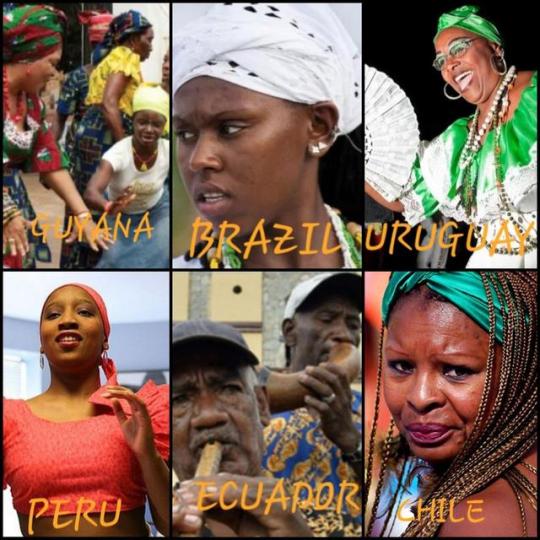#and the first Jews arrived in Peru during the 1500s
Explore tagged Tumblr posts
Text
Do you know this Jewish character?

#jumblr#jewish characters#kronk#kronk's new groove#the emperor’s new groove#jewish wedding confirmation#word of hashem#Disney has continued to affirm Kronk being Jewish in other media too#such as the Kronk challah and dreidel making guides#also not actually historically impossible funnily enough#the emperors new groove is set sometime between the 1300-1500s#and the first Jews arrived in Peru during the 1500s#i love this man
607 notes
·
View notes
Photo

SOUTH AMERICA ISRAELITES
AFRO-GUYANA
Afro-Guyanese people are inhabitants of Guyana who are of Sub-Saharan African descent, generally descended from slaves brought to the Guianas to work on sugar plantations. In 1621 the Dutch West India Company acquired a charter to colonize and monopolize trade in the Americas and in Africa where they established a chain of slave trading and collection forts along the western African coast to supply slave labor for the Americas. The first of many hundreds of shiploads of enslaved Africans began arriving in Guyana in 1640 to work on the Dutch slave labor plantations. Slave labor was used to build the remarkable system of large drainage canals, dikes and sluices that form a protective barrier between the Atlantic Ocean and the low-lying coastline where most of the population still lives. One of the largest segments of Guyana's population are the descendants of those freed slaves who stayed in the colony after 1833. They make up about three-tenths of the population. Guyana is the only English-speaking country of South America, it was also never a Spanish or Portuguese colony, but instead Dutch and then British. Emancipation Day in Guyana comes every August 1st and commemorates the abolition of slavery in Guyana in 1834. Guyana shares Emancipation Day with other Caribbean nations that were formerly British colonies. There is currently a Hebrew culture center in Guyana called ‘The Prophetic Priesthood at Jerusalem,’ that keeps the laws of The Highest. Also, the territory now known as Guyana was first inhabited by indigenous groups such as the Carib (Galibi or Kalinago), Arawak (Taino), Warrau, Wayana and Akawai. Before the captive’s slaves were brought to Guyana.
AFRO-BRAZILIAN
From the late 1500s to the 1860s, Brazil was consistently the largest destination for African slaves in the Americas. In that period, approximately 4 million enslaved Africans were imported to Brazil. Thousands of African slaves were brought to work in the gold mines. They were landed in Rio de Janeiro and sent to other regions. By the late 18th century, Rio de Janeiro was an "African city": most of its inhabitants were slaves. No other place in the world had as many slaves since the end of the Roman Empire. In 1808 the Portuguese Royal Family, fleeing from Napoleon, took charge in Rio de Janeiro. Some 15,000 Portuguese nobles moved to Brazil. The region changed a lot, becoming more European. The coast, in the past the place where millions of African slaves arrived (mostly from modern-day Angola, Ghana, Nigeria and Benin) to work in sugar-cane plantations, is where nowadays there is a predominance of Mulattoes, those of African and European ancestry. However, Salvador, Bahia is considered the largest African city outside of Africa, with over 80% of its inhabitants being African-Brazilians. It has been estimated by Darcy Ribeiro, a Brazilian anthropologist, author and politician that,12 million Africans were captured to be brought to Brazil, even though the majority of them died before becoming slaves in the country, only 45% of the Africans captured in Africa, to become slaves in Brazil, survived. Brazilian slavery included a diverse range of labor roles. For example, gold mining in Brazil began to grow around 1690 in interior regions of Brazil, such as modern-day region of Minas Gerais. Slaves in Brazil also worked on sugar plantations, such as those found in the first capital of Brazil—Salvador, Bahia. Other products of slave labor in Brazil during that era in Brazilian history included tobacco, textiles, and cachaça, which were often vital items traded in exchange for slaves on the African continent.
AFRO-URUGUAYANS
The majority of 190,000 Afro-Uruguayans are in Montevideo. The port of Buenos Aires served as the exclusive entry point for enslaved Africans in the Río de la Plata region. Slaves entering the port of Buenos Aires were then regularly shipped inland to Córdoba and the northwestern provinces of Salta and Tucumán in Argentina, across the Andes Mountains to Chile (see Afro-Chileans) and to the mines of Potosí in Alto Perú. Most African slaves worked as domestic servants or day laborers. Slavery was abolished gradually between 1842 and 1852. Economically they remain among the poorest sectors of Uruguayan society: most are non-qualified workers employed in the construction industry, domestic service, or cleaning and porter services. There is high unemployment among young Afro-Uruguayans. English is spoken in this country, but mostly for business, and then 99% of the population of Uruguay speaks Spanish.
AFRO-PERUVIANS
The first slaves arrived with the conquistadors (Spaniards) in 1521. In 1529 and 1537, Francisco Pizarro was granted permits to import 363 slaves to colonial Peru. The "New laws" of 1548 and the influence of the denunciation of the abuses against Native Americans by Friar Bartolomé de las Casas, slaves gradually replaced natives at the Encomienda’s. Over the course of the slave trade, approximately 95,000 slaves were brought into Peru, with the last group arriving in 1850.
Slave owners in Peru developed preferences to have slaves from specific areas of Africa (believed to have certain characteristics); they wanted to have slaves of one area who could communicate with each other. They believed slaves from Guinea, from the Senegal River down to the Slave Coast, were easier to manage and had marketable skills. They already knew how to plant and cultivate rice, train horses, and herd cattle on horseback. The slave owners also preferred slaves from the area stretching from Nigeria to eastern Ghana. The slave owners' third choice was for slaves from Congo, Mantenga, Cambado, Misanga, Mozambique, Madagascar, Terranova (who were probably bought in Porto-Novo, Benin), Mina and Angola. Two types of black slaves were forced to travel to Peru. Those born in Africa were commonly referred to as negros bozales ("untamed blacks"), which was also used in a derogatory sense. These slaves were shipped from west or southwest Africa or transported from the Spanish Indies or other Spanish colonies. Afro-Peruvians previously acculturated to Spanish culture and the ones who spoke Spanish were called negros ladinos (Latinized Negros) “Ladino” was a racist term used in the Iberia Peninsula. The Iberian Peninsula is Portugal and Spain, sound familiar? Well, if it does that’s because that is where black Jews (Yahudim) were expelled from and taking to the west coast of Africa only to be brought to the Americas and the Islands of the sea. Which would mean the slaves that were taking to Peru are descendants of these slaves, which would mean, they are the TRUE Jew/Yahudim.
In 1835, President Felipe Santiago Salaverry signed a decree again legalizing the deportation of slaves through the other Latin American countries. Thus, two years after his death, will be removed from the constitution the principle of "emancipating soil" according to which a slave entering Peru is, de facto, made free. In 1854, General José de San Martín outlaws slave trade in Peru. In 1856, President Ramón Castilla y Marquezado declared slavery abolished. Afro-Peruvian music has its roots in the communities of black slaves brought to work in the mines along the Peruvian coast. Today, Afro-Peruvians (also known as Afro descent Peruvians) reside mainly on the central and south coast, with the majority of the population in the provinces of Lima, Callao, Nazca, Chincha, Ica and Cañete. Many Afro-Peruvians live on the northern coast in Lambayeque and Piura. The greatest concentration of Afro-Peruvians and mestizos of Afro descent is in the Callao, an area that has historically received many of the Afro-Peruvians from the north and southern coast.
AFRO-ECUADORIAN
Slave ships first arrived in Ecuadorian ports in 1526, and slaves worked on plantations and in gold mines. Afro-Ecuadorians make up most of the balance of the percentage and include mulattos (mixed European and sub-Saharan African) and zambos (mixed indigenous and sub-Saharan African). Afro-Ecuadorians are an ethnic group in Ecuador who are descendants of black African slaves brought by the Spanish during their conquest of Ecuador from the Incas. They make up from 3% to 5% of Ecuador's population. The Afro-Ecuadorian culture is found primarily in the country's northwest coastal region. Africans form a majority (70%) in the province of Esmeraldas and also have an important concentration in the Valle del Chota in the Imbabura Province. They can be also found in important numbers in Quito and Guayaquil. Today, Afro-Ecuadorians have the highest unemployment level and are among the poorest of Ecuadorian social groups. Also, there is evidence that this group still faces regional inequalities and racial discrimination, particularly in urban areas.
AFRO-CHILEANS Afro-Chileans are descended from the Sub-Saharan part of Africa, who were brought to the New World by religious orders and Spaniards. Slavery bloomed from 1580 to 1660, the import of slaves into Chile was a response to a long-term population decline among indigenous peoples. Black slaves were often used as housekeepers, agriculture, gold mining, and construction projects. Mortality was high, due to harsh working environment. and other posts of confidence. It is believed some of them might have come from Peru from the Antilles or towns in Africa, specifically from the Bantu regions some also were considered as descendants of Enslaved Africans brought from Africa to Present day Peru, Cuba, Brazil, then later brought to Chile. Afro-Chileans are mainly located in Arica y Parinacota in northern Chile. They are not recognized by Chilean government as an ethnic group.
4 notes
·
View notes